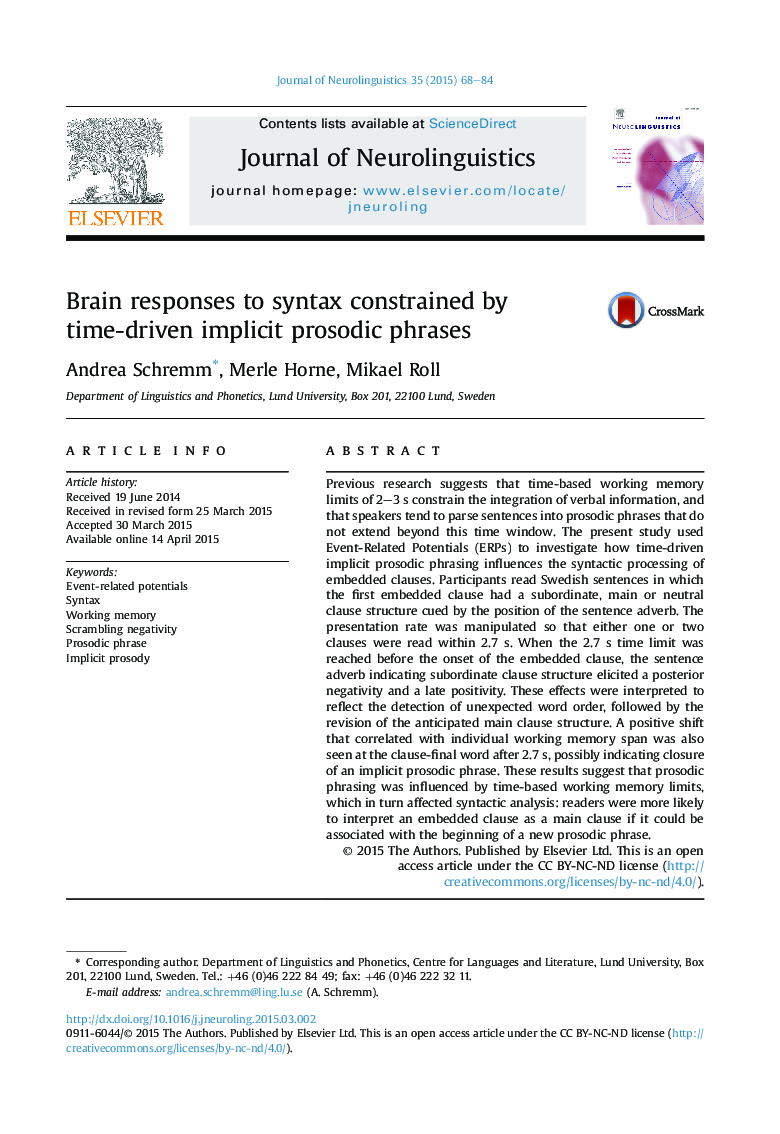| Article ID | Journal | Published Year | Pages | File Type |
|---|---|---|---|---|
| 7268794 | Journal of Neurolinguistics | 2015 | 17 Pages |
Abstract
Previous research suggests that time-based working memory limits of 2-3Â s constrain the integration of verbal information, and that speakers tend to parse sentences into prosodic phrases that do not extend beyond this time window. The present study used Event-Related Potentials (ERPs) to investigate how time-driven implicit prosodic phrasing influences the syntactic processing of embedded clauses. Participants read Swedish sentences in which the first embedded clause had a subordinate, main or neutral clause structure cued by the position of the sentence adverb. The presentation rate was manipulated so that either one or two clauses were read within 2.7Â s. When the 2.7Â s time limit was reached before the onset of the embedded clause, the sentence adverb indicating subordinate clause structure elicited a posterior negativity and a late positivity. These effects were interpreted to reflect the detection of unexpected word order, followed by the revision of the anticipated main clause structure. A positive shift that correlated with individual working memory span was also seen at the clause-final word after 2.7Â s, possibly indicating closure of an implicit prosodic phrase. These results suggest that prosodic phrasing was influenced by time-based working memory limits, which in turn affected syntactic analysis: readers were more likely to interpret an embedded clause as a main clause if it could be associated with the beginning of a new prosodic phrase.
Related Topics
Life Sciences
Neuroscience
Cognitive Neuroscience
Authors
Andrea Schremm, Merle Horne, Mikael Roll,
